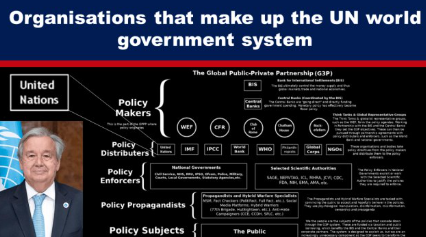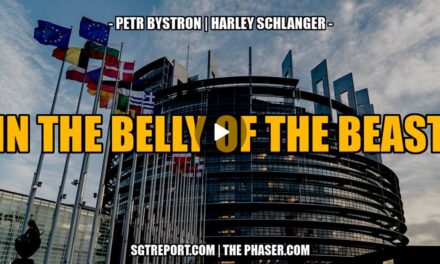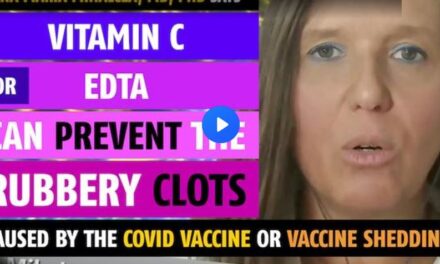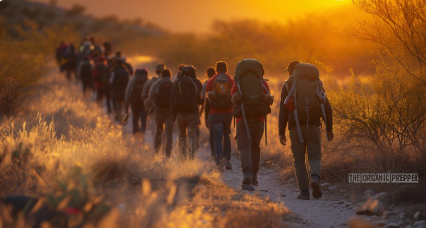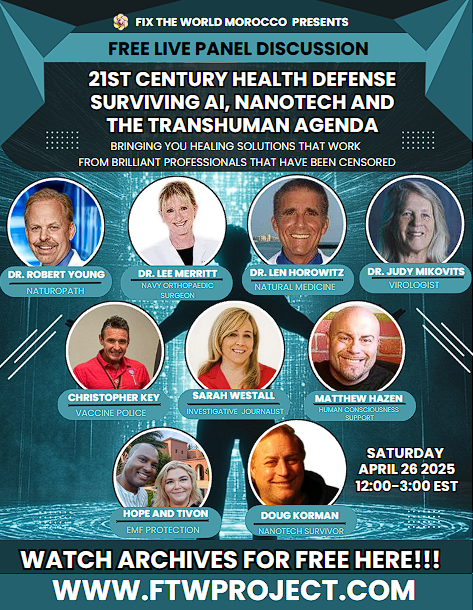The UN has been quietly gestating and building power for decades and, through agreements such as Agenda 2030, has become a sovereign power unto itself. This shadow global government seeks to regulate every dimension of our lives.
The UN has morphed into a leviathan. Its various agreements and goals seek to centrally dictate the world’s economy, migration, “reproductive health,” monetary systems, digital IDs, environment, agriculture, wages, climate modifications, one world health, and other related globalist programmes.
This article lists the UN organisations and a few of the partnerships that make up this leviathan. By doing so, we hope to demonstrate the pervasiveness of the UN’s tentacles and how far its nefarious aim of becoming the One World Government has progressed.
The UN System Overview
There may be as few as 193 or as many as 199 countries in the world. According to the UN, 195 countries have joined the UN, comprising 193 member states and 2 non-member observer states: the Holy See (Vatican City) and Palestine.
The United Nations (“UN”) is part of the UN system, which, in addition to the UN itself, comprises many funds, programmes and specialised agencies, each of which has its own area of work, leadership and budget.
The programmes and funds are financed through voluntary rather than assessed contributions.
The specialised agencies are independent international organisations funded by both voluntary and assessed contributions. The UN coordinates its work with these separate UN system entities, which cooperate with the organisation to help it achieve its goals.
In addition to the UN System, the United Nations Office for Partnerships (“UN Partnerships”) works globally, regionally and in countries – to transform the world through partnerships. The true extent of UN partnerships is more extensive than indicated below as UN agencies, funds and programmes each develop their own network of partnerships.
To begin to grasp the scale of the UN’s influence and control globally, you can browse through an independent study commissioned by the UN Department of Economic and Social Affairs titled ‘A Study of Partnerships and Initiatives Registered on the UN SDG Partnerships Platform’ which was published in 2019. You can also search the UN’s website for, for example, “strategic partnership.”
One noteworthy strategic partnership is the UN-WEF Partnership signed in June 2019 “to accelerate the implementation of the 2030 Agenda for Sustainable Development.”
In March 2022, UN Secretary-General António Guterres set up the UN High-Level Advisory Panel (“HLAB”) on Effective Multilateralism to advise member states “on those issues of key global concern where governance improvements are most needed.”
“Among the members in the HLAB on Effective Multilateralism were WEF-board member Tharman Shanmugaratnam (newly elected President of Singapore), WEF Young Global Leader Ilona Szabó de Carvalho, Rockefeller Foundation-trustee Donald Kaberuka and Council on Foreign Relations and Trilateral Commission member, Ann-Marie Slaughter,” Jacob Nordangård wrote.
“Their advice is a recipe for a worldwide technocratic management system that, if everything goes according to plan, will be guided by the global public–private partnership that was formalised in June 2019 with the signing of the United Nations and World Economic Forum’s strategic partnership,” he added.
Adding to the reach of the UN system and its partners, are the many conventions, treaties and standards signed over the decades.
A UN convention is a legally binding agreement between countries and the UN. After a country signs a UN Convention, they have a legal obligation to respect, protect and fulfil the principles written in the Convention. There have been more than 76 conventions adopted by UN General Assembly resolutions.
Every treaty and every international agreement entered into by any UN member is registered with the UN’s Secretariat. The UN treaty collection holds more than 560 multilateral treaties which cover a broad range of subject matters. These include treaties signed, for example, between two countries as well as treaties between the UN and one or more countries.
The UN system through its declarations, resolutions, reports and treaty bodies establishes standards which provide rules and guidance for governments and also monitors and holds them to account.
Source: https://expose-news.com/2024/02/10/organisations-that-make-up-the-un-world-government/
Bitchute: https://www.bitchute.com/channel/YBM3rvf5ydDM/
Telegram: https://t.me/Hopegirl587
EMF Protection Products: www.ftwproject.com
QEG Clean Energy Academy: www.cleanenergyacademy.com
Forbidden Tech Book: www.forbiddentech.website

